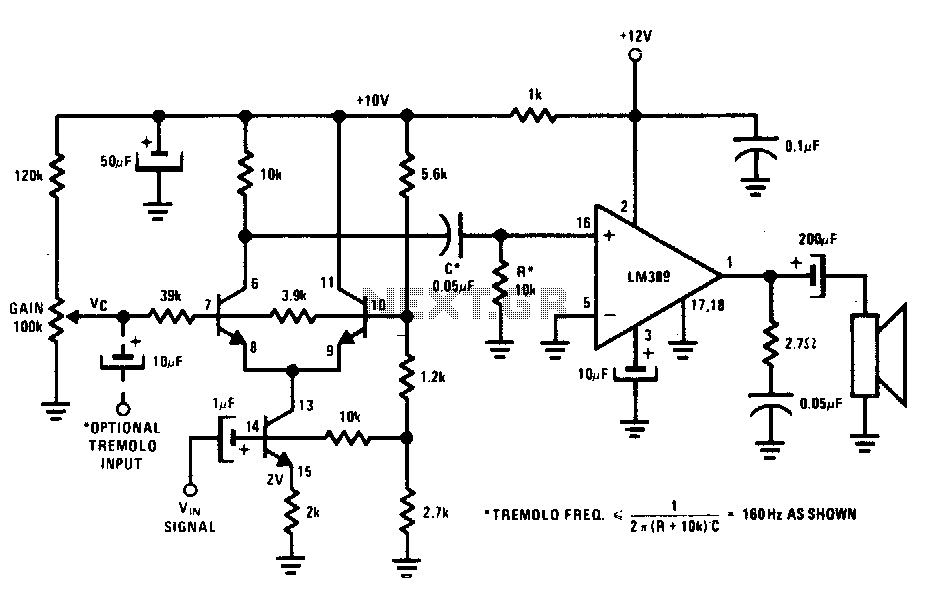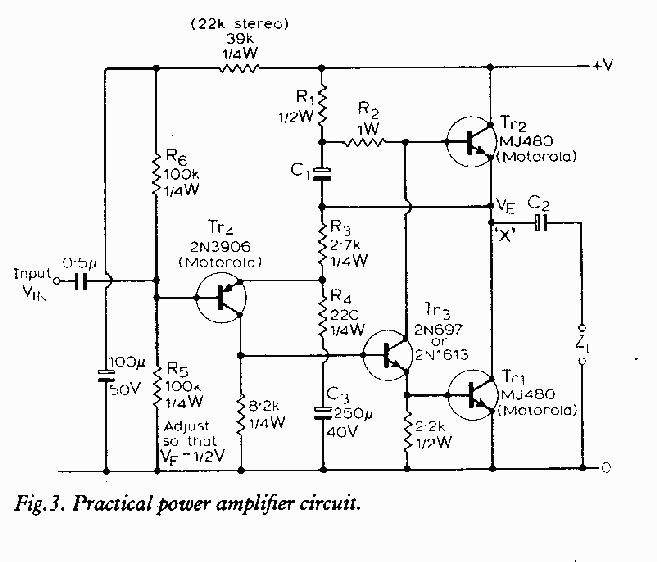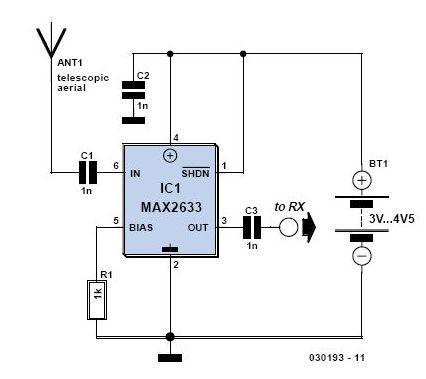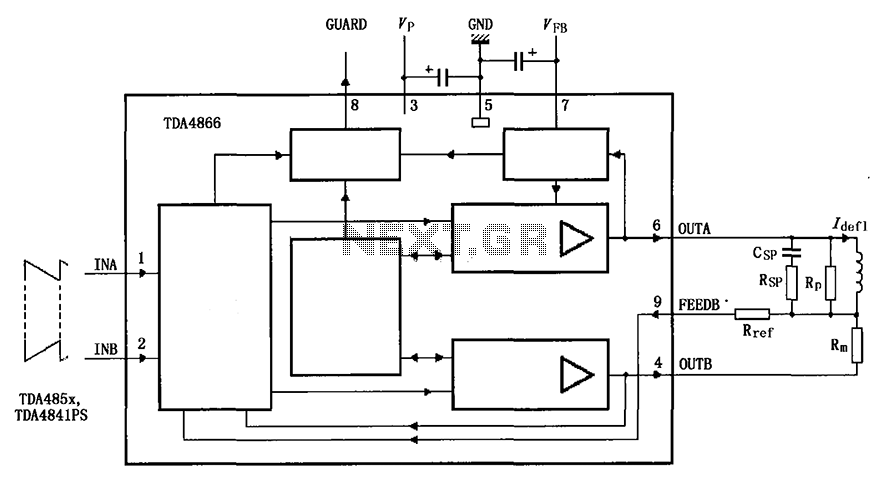
Thermocouple amplifier

Input protection circuitry allows the thermocouple to short to 120 Vac without damaging the amplifier. Calibration: Apply a 50 mV signal in place of the thermocouple. Trim R3 for V0UT = 12.25 V. Reconnect the thermocouple. More: Trim R9 for correct output.
The input protection circuitry is designed to safeguard the amplifier from high voltage transients, specifically allowing a thermocouple to short to 120 Vac without incurring damage. This is crucial in applications where thermocouples are exposed to high voltage environments, ensuring the longevity and reliability of the amplifier.
For calibration, a 50 mV signal should be applied in place of the thermocouple. This serves as a reference input to adjust the output voltage accurately. The resistor R3 is then trimmed to achieve a specified output voltage (V0UT) of 12.25 V. This step is essential for ensuring that the amplifier responds correctly to the thermocouple's output during normal operation.
After the calibration of R3, the thermocouple should be reconnected to the circuit to resume normal function. Further fine-tuning is required by adjusting R9 to ensure the output is correct. This final adjustment allows for precise matching of the output signal to the expected values based on the thermocouple's characteristics, thereby ensuring accurate temperature measurements and system performance.
Overall, the combination of input protection and calibration steps ensures that the amplifier operates reliably in high-voltage environments while maintaining accurate readings from the thermocouple.Input protection circuitry allows thermocouple to short to 120 Vac without damaging the amplifier. Calibration: Apply a 50 mV signal in place of the thermocouple. Trim R3 for V0UT = 12.25 V. Reconnect the thermocouple. Trim R9 for correct output.
The input protection circuitry is designed to safeguard the amplifier from high voltage transients, specifically allowing a thermocouple to short to 120 Vac without incurring damage. This is crucial in applications where thermocouples are exposed to high voltage environments, ensuring the longevity and reliability of the amplifier.
For calibration, a 50 mV signal should be applied in place of the thermocouple. This serves as a reference input to adjust the output voltage accurately. The resistor R3 is then trimmed to achieve a specified output voltage (V0UT) of 12.25 V. This step is essential for ensuring that the amplifier responds correctly to the thermocouple's output during normal operation.
After the calibration of R3, the thermocouple should be reconnected to the circuit to resume normal function. Further fine-tuning is required by adjusting R9 to ensure the output is correct. This final adjustment allows for precise matching of the output signal to the expected values based on the thermocouple's characteristics, thereby ensuring accurate temperature measurements and system performance.
Overall, the combination of input protection and calibration steps ensures that the amplifier operates reliably in high-voltage environments while maintaining accurate readings from the thermocouple.Input protection circuitry allows thermocouple to short to 120 Vac without damaging the amplifier. Calibration: Apply a 50 mV signal in place of the thermocouple. Trim R3 for V0UT = 12.25 V. Reconnect the thermocouple. Trim R9 for correct output.





